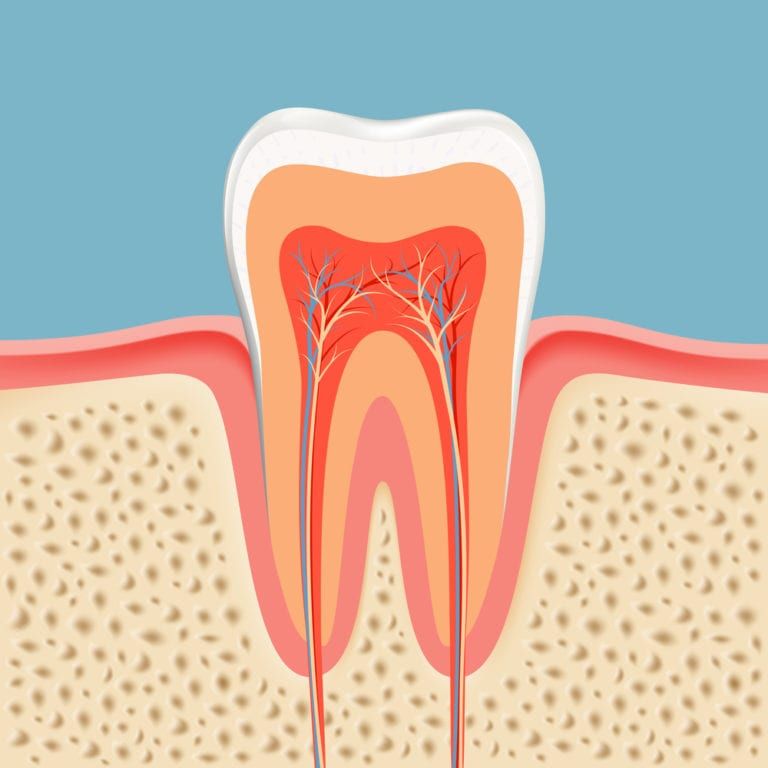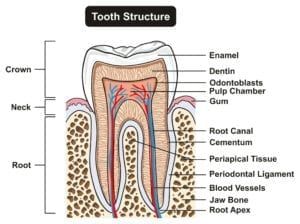About Your Tooth

To understand more about why endodontic treatment is necessary, it helps if you have a basic understanding about your teeth. For starters, humans have 32 teeth: 8 incisors, 4 canines, 8 premolars, and 8 molars. In most cases, it is usually the molars that are prone to requiring endodontic treatment because they are so far in the back and can be hard to clean properly. Each one of these teeth has both external and internal anatomical structures that helps it to maintain its chewing and speaking function.
External Anatomy:
The external anatomy of a tooth is broken down into three main structures: the crown, neck, and root. The crown is the visible portion of the tooth that extends out of the gum line. The neck is underneath the crown and sits just above the gum line and tooth roots. The roots represent two-thirds of the entire tooth, but are completely submerged below the gum line and are not visible.
The roots are held into the tooth’s socket by cementum and the periodontal ligament. Cementum is a hard, bone-like connective tissue that secures the tooth roots to the gums and jawbone, while the periodontal ligament is responsible for holding the teeth against the jaw.

Internal Anatomy:
The internal anatomy is broken down into different layers: the enamel, dentin, and pulp. The enamel is the outermost and hardest layer that covers the crown and neck of the tooth. In fact, enamel is the hardest substance in the human body and is composed of calcium phosphate. The middle layer is known as dentin. Dentin is hard, though not as hard as enamel, but is porous and contains microscopic tubes that lead to the inside of the tooth. The innermost layer of the tooth is known as the pulp. The pulp is made up of living tissue such as blood vessels and nerves.
Unfortunately, the pulp layer can be irreversibly damaged when exposed to bacteria from decay, deep restorations, fractures, trauma, or periodontal disease. When the pulp layer becomes infected, the tissue must be removed in order to alleviate pain and preserve the remaining tooth. The process of removing diseased pulp tissue from the inside of the tooth is known as endodontic therapy. During one common type of endodontic therapy, known as a root canal, the pulp is removed from the pulp chamber and root canals. Because the supporting tissues are not touched and remain intact, the root will continue to function normally.
For the latest in endodontic treatment, schedule a consultation with Dr. Dalzell of Raleigh Endodontics today!
